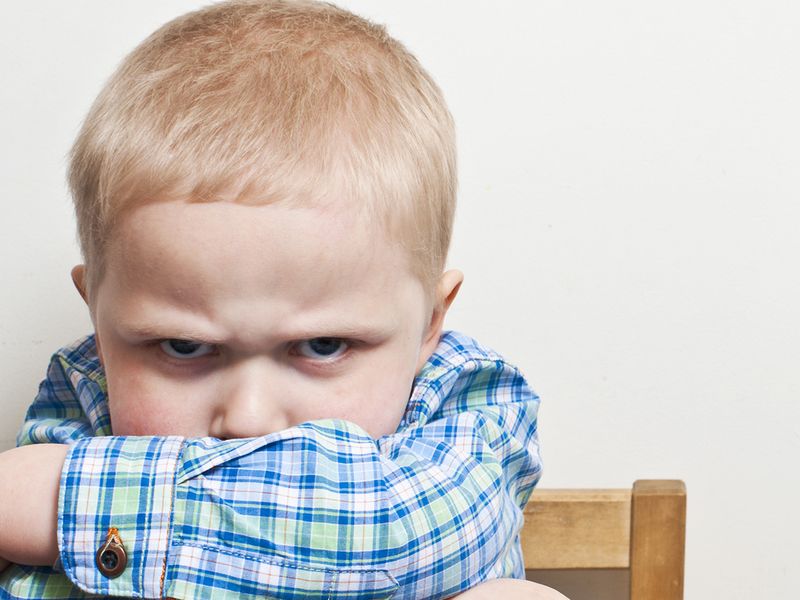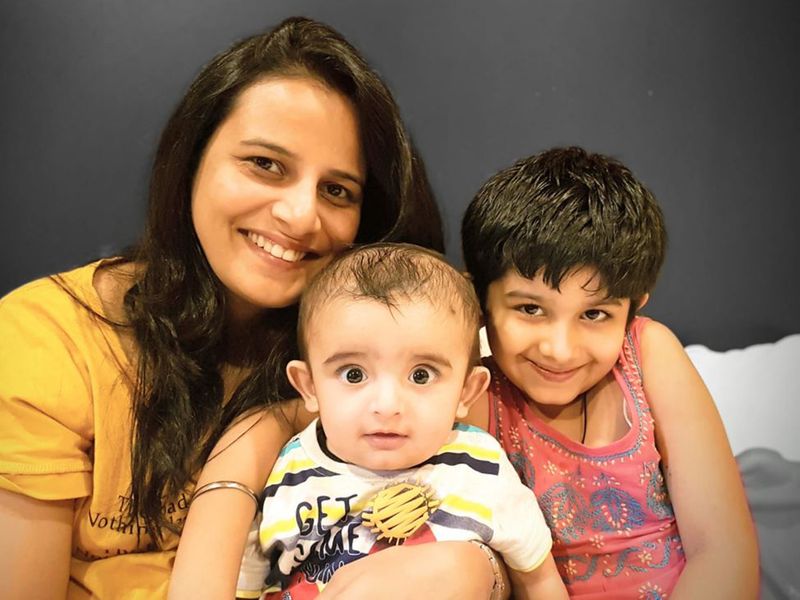
He tore up a certificate after he didn’t win the first prize.
Kirtana Menon, (name changed on request) a single mother and teacher from Abu Dhabi recalls some particularly dark years. After separating from her husband, she had moved into a different house with her eight-year-old son. A normally cheerful and docile child, he seemed to accept the change at first. He appeared to accept meeting his father on weekends.
Menon, already under the stress of a broken marriage and struggling with finances, didn’t take too much notice of subtle changes in her son at first. “He was irritable when I refused to give him an ice-cream, or if I came late from work. But I thought that they were just tantrums.”
She adds that she ‘wasn’t entirely calm’ at that time, either. She was always close to tears. “He saw me fighting on the phone with my husband in the first few months after the separation. Sometimes, we yelled at each other in person, too. We stopped fighting, eventually, but I think the damage was done. It affected him deeply.”
She tried to be with her son as much as possible, play his favourite games and cook the food he loved. However, Menon started noticing changes. If he lost a card game, he would refuse to play another game. “He would just leave the table and sit in a corner. At first, I tried to placate him by bringing him his favourite food, but in that mood, he just didn’t want me around,” she adds. “My parents told me that it was just a normal tantrum, and to ignore it. He would bounce back to normal an hour later, but I still couldn’t stop worrying.” However, these spells of sullen moods became longer, and a regular fixture.
‘Bad behaviour’ in young children
Anger presents itself in different forms for young children, especially below the age of twelve. The signs of this ‘bad behaviour’ as it is often termed, is when they become un-cooperative. They refuse to participate in activities, withdraw into themselves, and don’t follow up with instructions. “That’s a common sign that the child is unhappy. The anger is internalised,” explains Priscilla J. Augustine, a Dubai-based child and family therapist.
However, anger isn’t always in the form of outbursts. “Young children in particular, internalise a lot of the anger. They don’t know how to express their emotions. They carry a lot of that stress,” says Augustine.

Menon realised that scolding her son just made him more withdrawn. Sometimes, he fought back. Ignoring him was not a solution. “He was not physically violent, but he would just answer rudely. His teachers began complaining to me. He was not paying attention anymore in class, and was busy creating a disturbance. Once, he was so upset about not coming first in an acting competition, he tore up the participation certificate in front of the teachers,” she says.
These are clear signs that a child is unhappy, and is unable to explain why. “We need to give them parameters to work with. It’s like a pressure cooker. They need to let out steam too. So they can be given boundaries, and let them know - this is what you need to do, and this is the space where you can let it out,” says Augustine.
What makes the child upset?
This behaviour pattern of being un-co-operative, disengaging and withdrawal could recur for a number of reasons. These include the frustration at the inability to express what’s on their mind, the feeling that they do not have control over a situation, or the desire to do something independently.
Maida Kajevic, clinical psychologist at the German Neuroscience Center explains that rejection and sensory overload also contribute to the build-up of anger in a child. “All children, and adults alike, can experience sensory overload from time to time. For children with sensory processing disorder, this is far more acute and things like noise, light and even smells can be particularly distressing for them,” she elaborates. The child feels rejection when he is instructed to not do something, or when he is forced to do something he doesn’t want to do.
Shaheera Anwar, a Pakistani journalist, moved with her husband and three-year-old son from Karachi to Abu Dhabi last year. The move upset her son, and he would cry more often than usual. There were too many changes, and he could not express himself. It was ‘full-blown screaming, she says. “He would start screaming if one of us chose to leave the room. He wants us with him all the time,” says Anwar. She found this particularly strange as he used to go to a pre-school in Pakistan and didn’t mind being without them for hours. “He would stay hours with his grandparents, when we aren’t there.”
There were numerous changes in locations which left her son rather upset. “We had to stay in a hotel apartment in January this year. Then we moved to a rented apartment in the middle of January. In mid-March, we moved to Dubai. So that was four apartments in four months.” Anwar lets him vent his frustration and anger, as she feels that he just needs to get settled in a new space. She says that they’ve been monitoring him and trying to speak calmly to him. “We try to see what he needs and how we can help him,” she explains.

Anger needs to be managed, not ‘controlled’
Don’t leave your child alone whatever else you do, strongly advises Kajevic. The child is dealing with strong feelings that might frighten him.
The child requires the support and control of parents. “In this way, they will eventually learn to calm down. The essence is for the child to accept all feelings as natural and normal and to deal with them on their own. Provide him with a role model by showing him unconditional love and support during these difficult times,” says Kajevic.

First, the emotions need to be considered as normal emotions. Geetika Kapoor, a child therapist from India, advises, “The actual root cause underneath those emotions needs to be addressed.
“When parents or teachers address such issues, they need to be calm. We need to create an environment where the anger is normal, what is prompting them to behave in such a way. We need to create a vocabulary of emotions for the child. Naming those emotions are difficult, but we need to get them define those words in the way that they can.”
You need to get the child to express what thoughts are in their mind. This exercise is intended for both the parents and teachers, as they need to look at the environment that they have created as well.

It’s like a pressure cooker. They need to let out steam too. So they can be given boundaries, and let them know - this is what you need to do, and this is the space where you can let it out
Menon finally sought professional help, for both herself as well as her son. It was a long process of healing for both of them.
She understood that he had been adversely affected by the separation, watching her grieve and a completely different environment than what he was used to. “So whenever he used to get angry or upset, I kept calm. I was working hard at being calm for both of us. I just kept talking to him gently, firmly whenever he got into a mood - to the point that he could finally explain what was upsetting him. As soon as he explained, I would hear him out and just discuss. I think seeing me calm and less stressed, helped him too.” It has been four years, and the anger spells are few and far in between, says Menon. “Now, when he does get angry, I feel like I can handle it.”
Augustine explains another process. For instance, the child is given a task. You set a timer for fifteen or twenty minutes. If they are unable to finish the task within the time limit, gentle discipline correction is needed, where they repeat the task. “Young children understand very quickly, that there are consequences that follow inaction and bad behaviour. They realise ‘I want to do better than this’ and ‘I want to join my friends’ after this task.” So, the child is allowed their boundaries, but they also understand the consequences that can follow through. This comfort and correction helps them navigate through their anger and frustration.
‘Boys will be boys’
You would have often seen younger boys getting physically aggressive in school. What starts off playful, can sometimes escalate, leading to deeper anger issues. Their fights usually include wrestling, kicking and punching, rather than actually talking.
We need to create a vocabulary of emotions for the child. Naming those emotions are difficult, but we need to get them define those words in the way that they can
“It’s very different with boys and girls, though it starts out with a similar pattern,” says Augustine. “Girls tend to learn the emotional language faster than boys. On the other hand, boys, if they don’t learn it quickly, they externalise it with aggressive behaviour.” When that happens, the teachers and parents have to take note.
Aggression under control is healthy, and drives them to do things in life. So we have to be careful on how we reprimand them. “I would suggest that when boys get aggressive, we apply similar boundaries and parameters,” says Augustine. They need to find a way to blow off steam in a constructive manner.
Augustine says that it is far more instructive to get the father involved, when dealing with aggressive boys. “They need to go out. He needs to express a lot of this frustration and boredom. Put him in an activity, like taekwondo or boxing. So that’s the framework I would recommend for parents. Connect him with a male coach in school. That masculine input somehow calms them down,” she observes.
Parents advise…
The child wants to feel safe in their environment. Houri Elmayan, a Dubai-based Lebanese national and a PR strategist, feels that quality time and more family activities reduces anxieties for the child. Mother to a two year old, she says, “Children want to be heard and feel secure. Simple things like not looking at your phone when spending time with them helps them not feel as frustrated and engages them more to express their feelings.”
Neha Pandit, an Indian expat home-maker based in Dubai, strives towards a healthy and honest communication with both her children, Aahana and Anay, aged nine and four. “Simple questions like ‘What’s upsetting you’ can significantly help in initiating a conversation with your kids which eventually calms them down and leads to finding a reasonable solution. I also encourage them to use ‘I’ statements instead of blaming or accusing other kids if they have any disagreements while playing,” Pandit advises. “Sometimes a positive denial of their demands and firmly conveying limits of their behaviour also helps. For instance, explaining to them that they cannot hit another child, or throw toys if they are angry,” she elaborates.
Delna, a Dubai-based PR strategist and mother to two teenage sons emphasises the need on anger being acknowledged. However, she always emphasised with her children that physical violence will never be tolerated. She recalls an incident where someone broke her son's bicycle and an angry mother instead, called him to hold his ears and apologise. "He was so angry. I took it up then, and went to the lady's house and told her that she couldn't behave like that." Delna did not show aggression, but kept her cool. This composure helped her son calm down. She also stresses on the need for a 'safe' environment', where they are allowed to show how they are feeling. "They need to know that they have support. Of course, if they are wrong, then we figure it out and talk to them."

How parents can resolve their child’s anger
• Accept your child's anger: You want your child to feel that their emotions are acceptable. You don't want them to feel like they have to hide their emotions.
• Encourage them to use words: You could say, "When you're angry, say, 'I'm angry,' and I'll help you." Over time, children internalise your voice and your rules. By the age of five, children develop their superego, which acts as an internal stop sign and helps them control aggressive impulses.
• Try to find a solution: A slice of apple before dinner instead of ice cream – or use distractions – “I know you're upset that it's raining and we can't go to the park. Why not play in a tent in the living room?" - to motivate your child towards something that excites him. You can also offer an alternative or compromise.
• Provide the child with a daily routine: For many children it is crucial to have a schedule of daily activities, which is not disturbed often. This gives children a sense of comfort, security and control over the situation.
• Avoid the need to frequently say "No": In the house, make sure to adapt the space to the children's safety and needs in order to avoid the need to say "No, don't touch it" every time. It is also important to set clear limits.
• Allow the child to make a choice: For example, offer the child to choose whether to eat meat or vegetables first for lunch. Make sure that this does not turn into a choice of whether he wants one or the other, but rather that he chooses which dish to eat first.
• Don't say "maybe" - When you say "maybe" young children often interpret it as "yes". That's why it's better to say ‘yes or no’ right away and explain why.
• Discover the triggers: Understand the root cause. Every child is different, and what makes one child angry can be completely different for another child. You don't have to say no to everything. Look for alternatives. Decide what is worth fighting for.
• Discover your child's limits: If they’re upset about something they can’t do, choose simpler activities. Let them build a new skill.
Information courtesy: Maida Kajevic, clinical psychologist








